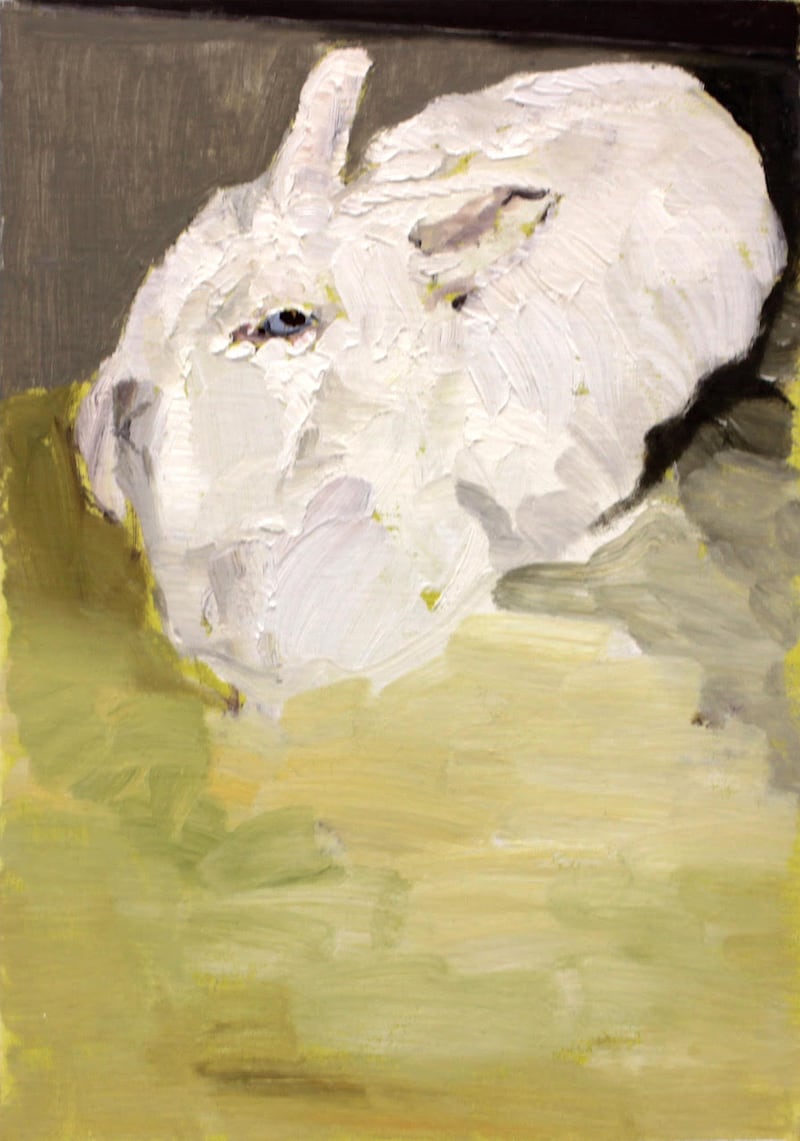LAST DAY OF MAY
Merlin James, Elizabeth Magill, Stephen McKenna.
Kerlin Gallery, Anne's Lane, South Anne Street, Dublin 2
Until July 6th;
kerlin.ie
★★★★★
Despite the implication that all of the summer is ahead, the title Last Day of May has an elegiac note. The very expression “last day” has an edge to it. Even the word “last”, perhaps. One of the three artists included, Stephen McKenna died, sadly, not that long ago and was a particularly valued, vital presence. The French painter Jean-Auguste-Dominique Ingres, a stupendously good draughtsman, famously noted that drawing is the probity of art. One feels that McKenna, a fellow painter, would agree with him. Certainly McKenna seems always to have drawn, not as an afterthought or adjunct to his painting, but as an essential pursuit, and he was also an excellent draughtsman.
This show marshals some of his drawings made over a long time span and it juxtaposes them with drawings by two other noted and quite different painters, Elizabeth Magill and Merlin James.
Depending on the nature of the exhibition it houses at any particular time, the Kerlin’s main gallery space can impart quite differing senses of scale. There are more than 90 pieces in Last Day of May, arranged in clusters, and the room does not feel remotely over-crowded, it feels really big and spacious. As a piece of installation design in itself, the exhibition is terrific.
It’s also rewarding as you follow the three interwoven voices arranged along the walls: three voices because each has a distinct personality that comes clearly through, even though drawing is never exactly one consistent thing for any of the artists. That is, there’s surprising variety of approach within each, but you can still easily match drawing to artist.
James is long established as a proponent of easel painting that has an idiosyncratic, retrospective quality – he is drawn to artists going back about a century or so, who were slightly, or significantly, apart from the mainstream; artists who might have promised a more diverse modernity. In a sense he aims to deliver on that alternative modernity. His free, spare charcoal line sketches recall the immediacy of Van Gogh, with a more abstracted touch. They are all-or-nothing drawings. Their terse directness suggests that he throws himself into them and they work or they don’t. Well, presumably that’s the case, and we see the ones that do work.
Magill’s drawings are probably the revelation of the show, especially if you are more used to her dream-like landscape paintings. Small in scale, beautifully made, they range from finished pieces with layers of coloured wash, displaying the sensitivity and precision of Holbein, to quasi-doodles – but virtuoso doodles. The press release reports her as remarking that she often draws in the morning, “as a way to connect with the day”. And what we see does have the air almost of pages from a diary or sketchbook, reflecting her thoughts, observations, speculations. The more you look, the more a sense of the drawings’ relationship to her paintings emerges.
Such a relationship is always clear in McKenna’s drawings, which are often directly related to paintings. As that plays out in this exhibition it is quite rewarding – it’s a bit like having a survey in miniature of a significant proportion of his life’s work. His enquiring mind led him to examine the position of drawing in a screen-based, click-and-swipe culture. Drawing may appear to be a niche activity but, he argued, a drawing compels us to think about what we’re looking at, and will never be dispensable. Last Day of May makes a persuasive argument for the cause.

MOLLY DOUTHIT: DAILY BREAD
Molesworth Gallery, 16 Molesworth Street, Dublin 2.
Until June 28th;
molesworthgallery.com
★★★★
As with Elizabeth Magill’s drawings in the Kerlin, Mollie Douthit’s small oil-on-panel paintings in Daily Bread have the air of being a visual diary. In Douthit’s case, though, what she does is to appraise her surroundings on a daily basis. The term “diary” might imply a record of events, but Douthit’s insight derives from reviewing the same, immediate objects and spaces every day, an almost meditative process, elucidating the richness of everyday things including food, utensils, textiles, furniture and more.
That includes herself: self-portrait studies punctuate the exhibition. In these as in general, Douthit has a direct, informal, tremendously honest approach. Books – the physical objects – feature as subjects recurrently, and she is a fine painter of books, conveying the idea of unseen content between the covers, a richness within.

Charles Brady might come to mind (as well as Morandi and Gwen John). Like Brady, Douthit is American. Her arrival in Ireland was unlikely enough. From Grand Forks in North Dakota, she studied in Boston and then came to the Burren College of Art to complete her MFA. After five years in Ireland she felt drawn back to North Dakota and is based there again.
Her subjects, incidentally, include a friend’s rabbit – Joey – who, with the investment of much patience on Douthit’s part, turned out to be a particularly fruitful, if tricky, portrait sitter.












